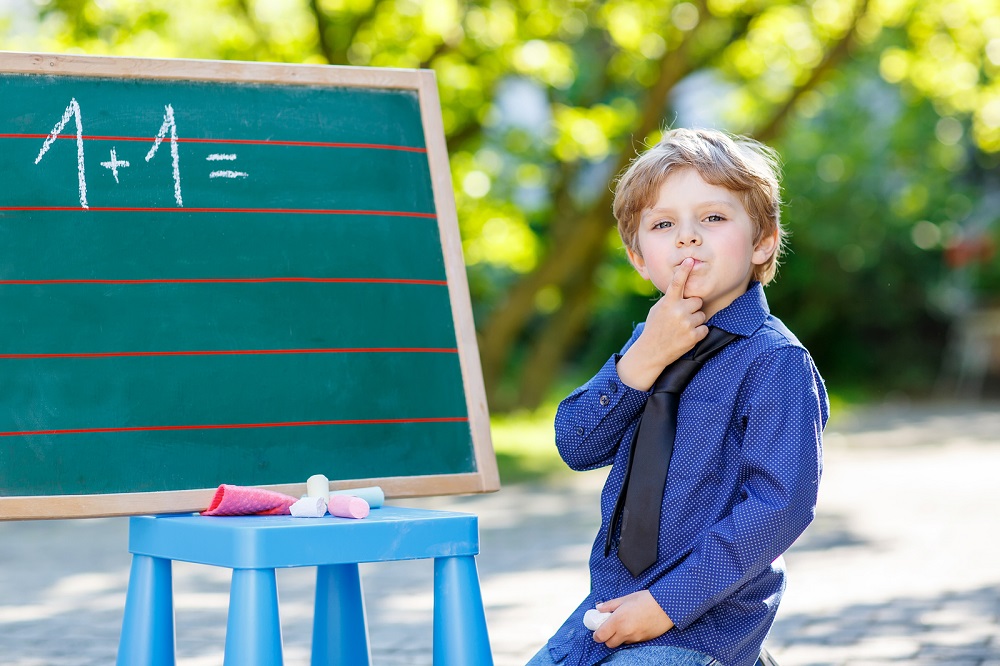Individual Education Plan Goals: The Heart of It All
10/20/2017

A few weekends ago, my beloved and I decided to take a road trip west of our humble little east Arkansas town. We were both worn out from a long span of various and sundry things-broken fences needing mended, dogs needing trips to the vet, setting up a classroom, meeting after meeting, supporting my aging parents, and having spent a month with the grandkids here in our home. His work as a paramedic is very stressful and exciting but taxing...
In short, we were ready to go find some new scenery and enjoy the majesty of nature in western Arkansas.
As we headed into the sunset after work, we knew our general course: west. Head toward the sun! As our car sped down I-40 toward Little Rock, we knew where were going and we knew that once we hit Little Rock, we would need to bust out the GPS in order to find precise direction because we had not one single clue where to go after leaving the former residence of Bill Clinton.
With the GPS and a printed map of the area surrounding the state park which was our destination, we were able to meticulously and easily achieve a safe and uneventful arrival to our destination for a weekend of hiking and sight-seeing in the Ouachita Mountains (If you've never been, add it to your short list.). With conciseness, we rolled into the parking lot without any confusion. Our goal was specific, the road smooth, the directions clear, the checkpoints were cleared without hesitation or confusion, but if we'd needed some support along the way, we would have easily been able to stop and ask for guidance or call the resort for more help.
The importance of knowing where we are and to where we are heading is critical during travel, so, too, is it critical when writing goals for the IEP's of our students.
Goals are built based on a variety of input from a variety of sources, especially when an initial IEP is being written.
If your child has been through the Response to Intervention process, a series of progress monitoring reviews, observations, and strategic interventions, and it has been deemed appropriate to move forward through formal assessing to develop an IEP, the goals are, in my opinion, the critical component of the document.
RELATED READ - Parental Tips and Advice to Get an IEP Approved for Your Child
As the child's teacher, it is my responsibility to review the formal assessments, to discuss the student's strengths and challenges with the team, and to develop wholly appropriate goals which are specific, measurable, achievable, result-oriented, and time-defined. If there's no road map toward success, how will anyone know how to meet the goal or even know what the goal really intends to accomplish?
Blessed to have many good friends in the field of special education, I decided to pose the question to them: What does it mean to you when I say "Write a good IEP goal?"
My really smart friend Dawn, Process Consultant and Speech Language Department Chair for the St. Joseph School District in Missouri is someone who daily attends to compliance for her district, Dawn's perspective is as follows: "A 12-month period of time and overarching goals are worthless. They should be highly specific goals so that anyone looking at the goal knows exactly what to work on. Plus, the baseline and the goal need to match. One needs to make sure that it's something you can measure. Saying, "Billy is going to improve Math skills to a Second Grade level" is too vague. Noting that Billy will be able to do two-digit to two digit number addition problems with 80% accuracy in three trials makes so much more sense."

I like having really smart friends out there doing right by kids no matter what kind of work it will take for kids to achieve and grow… from compliance team members to classroom teachers to speech language pathologists to physical therapists and all points in between.
My same really smart friend Dawn attended a conference recently where she learned that the majority of litigation in the world of IEPs in Colorado is being driven by need to show documentable, measurable evidence of advancement toward annual goals and if growth isn't occurring, the team needs to reconvene to alter the goals in this dynamic, living, breathing document. It is, after all, about the child and NOT about the staff's meeting schedules. If a goal has been met, the document needs to be updated. "The team needs to make sure the baseline data and goals are in alignment," says M.R.S.F.D.
If this point is not clearly enough stated, let's go back to my initial word picture of my road trip west with my map and GPS: I had a clearly defined destination (my goal). My destination was derived based on my budget constraints and ability to take time off (my formal assessment data). The fact that I was becoming nuttier than a squirrel turd because of the busyness of life was not being altered by my attempts to ramp up my yoga practice, an hour or two of quiet time alone in my bedroom listening to the ocean waves on my phone's Sounds of Nature app were representative of my RtI interventions not working. Establishing the goal to find rejuvenation by my trip's expected outcomes clearly aligned with baseline information. By no means does my analogy intend to discount the very specific needs of our precious students, rather it serves as a real life example of linkage of the end to the beginning. This stuff gets confusing and if you are new to it all, Plain English and real-life connections can help.
Another really smart friend, Kelly, a special education resource teacher in northeast Arkansas, said that from her perspective, the goals in any IEP need to be ATTAINABLE, goals which kids can actually master. In addition, she believes goals need to be monitored and that there should be a way to easily gather data to check for progress toward achievement.
So, what's RtI really all about? Because it's the initial step towards an IEP and where teachers begin to see the areas of challenge for children, it's important to have a clear understanding of this-and it will be discussed in a different article in more detail. However, here is a basic overview:
Step 1: Teacher sees evidence of the student not understanding the material. Teacher isolates the skill deficit area and prepares specific intervention lessons to be delivered within the classroom setting.
Step 2: Teacher has spent at least two weeks working with the student focused on the area of deficit. No improvement. Teacher discusses the issue with the professional learning community comprised of other teachers and specialists (Speech Language, Physical Therapy, Occupational Therapy, etc.) to present the student's challenge, work samples, and any other data gathered from, for example, progress monitoring. The teacher is given additional strategies/intervention ideas and returns to the classroom for at least two more weeks of solid intervention within the classroom. This is Tier 1.
Step 3: The teacher employs strategies and returns to the meeting for discussion and further actions. If it is determined that the student needs to move into Tier 2 interventions (targeted support/interventions in a small group setting). This strategy is employed for an amount of time determined by the team, typically one quarter of the school year or more.
Step 4: Once the interventions have all been utilized and the student is still not where they need to be, the next step is referral for formal assessing for special education. Once assessments have
been completed, the IEP Team determines if development of an individualized education plan is appropriate for the student.
Along every step of the way, THE PARENT IS INVOLVED IN THE CONVERSATION.
Once a student has been through the RtI process, EVERYONE involved in this child's education should have a rock-solid clear handle on what the student's goals need to be.
The next question which deserves to be asked is, what does a well-written goal look like? My really smart friends agree that goals need to be specific, measurable, achievable, result-oriented, and time-bound.
A great example of a well written IEP goal is on page 16 of http://www.specialedsolutions.com/store/images/PDF/WMIEP_Sample.pdf booklet available on their website titled Writing Measureable IEP Goals and Objectives by Barbara D. Bateman and Cynthia M. Herr.
In a well-written goal you will first see the Present Levels of Performance. This section tells what the student does well and in which areas the student needs further development as associated with the specific goal area. For example, a teacher wouldn't write about what good things the kiddo can do in Math if the goal is a Language Arts goal. This section is often called the PLAAFP (jargon).
Next, the goal. The goal should be based on what SKILL the student needs to master-not about what element of the curriculum the student needs to master (https://www.esboces.org/cms/lib/NY01914091/Centricity/Domain/64/IEP%20Measurable%20Goals.pdf).
Writing a really good goal is, in my opinion, best done when you plan backwards. First, what is the skill requiring change or improvement? How often will assessment and adjusting need to occur? How will records be taken/kept to mark the level of performance? How long will it take to expect growth or proficiency? What is the bar I will set for measuring the performance of my student's achievement?
Then come the objectives. Objectives are the smaller steps which will be measured as the student makes progress toward the goal (https://www.virginia.edu/) and are written in a way that identify when progress will be measured.
My parents receive quarterly updates on their child's progress toward their goals. If there is ever a question, they know their right is to call me so we can discuss their child's progress in more detail.
If you are feeling overwhelmed by any of this information, feel free to ask questions. If you disagree with the goals the team has identified, open up the conversation about why they believe those are appropriate goals for your child's plan this year. Ask to see the evidence. Be open-minded as they discuss the results of formal assessments, share informal assessments and anecdotal data along with progress monitoring information. In the end, if you're not satisfied, you can call for a Due Process hearing. Your child-and you, the parent-have rights (http://wrightslaw.com/).
My really smart friends say that the goals need to actually BE measured.
RELATED IEP READINGS:
- Parent Participation at the IEP Team Meeting
- 9 Questions to Tackle in Demonstrating Knowledge of Your Students
- Get OUT of the BOX! Our Kids Aren't Succeeding
- 4 Terms for Translating Behavioral Jargon
- Special Education and Family Involvement
- Dear Novice Teacher:An Open Letter About What You Really Need To Know For a Successful Teaching Career - November 9, 2021
- I Never Forgot What It Felt Like to Struggle in School… So I Decided to Become the Teacher I Always Wished I Had - October 8, 2021
- The Issue of Bullying Students with Disabilities Hits Particularly Close to Home for Me - August 16, 2021











